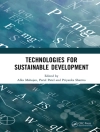GIS for Science presents a collection of real-world stories about modern science and a cadre of scientists who use mapping and spatial analytics to expand their understanding of the world.
The accounts in this book are written for a broad audience including professional scientists, the swelling ranks of citizen scientists, and people generally interested in science and geography. Scientific data are brought to life with GIS technology to study a range of issues relevant to the functioning of planet Earth in a natural sense as well as the impacts of human activity. In a race against the clock, the scientists profiled in this volume are using remote sensing, web maps within a geospatial cloud, Esri Story Maps, and spatial analysis to document and solve an array of issues with a geographic dimension, ranging from climate change, natural disasters, and loss of biodiversity, to homelessness, loss of green infrastructure, and resource shortages.
These stories present geospatial ideas and inspiration that readers can apply across many disciplines, making this volume relevant to a diverse scientific audience.
See how scientists working on the world’s most pressing problems apply geographic information systems—GIS.
विषयसूची
INTRODUCTION
The Science of Where: A Framework and a Process
Introduction (How the Book and Website Work Together)
What’s new in the 2nd Volume
New Reflections from Pulitzer-Prize Winner Jared Diamond
PART 1: How Earth Works
US Ocean Reports Tool: Intelligent Web Application for Ocean Neighborhoods
Global Islands
GIS as a Scientific Workbench: Pacific Gyre/Ocean Plastics
Subsurface Prediction for Earth Analytics
PART 2: How Earth Looks
Mapping Human Settlement
Diverse Farms, Diverse Foods
Emerging Hotspots of Forest Loss
Sustainable Precision Agriculture
Air Quality Monitoring with EPA’s Air Now
PART 3: How We Look at Earth
Urban Tree Canopy Mapping (small areas, big data!)
Utilizing the NASA Atmospheric Science Data Center (ASDC) Geospatial Platform for Data Analysis
NASA Disaster Mapping Portal: Leveraging GIS for Disaster Response, Recovery, Resilience and Reporting
Machine Learning and Full Motion Video for Environmental Monitoring
PART 4: Training Future Generations of Scientists
Evolution of Students’ Spatial Skills
PART 5: Technology Showcase
Living Atlas
Spilhaus Projected Coordinate System
Excalibur (imagery platform)
Insights
Spatial Machine Learning
Raster Function Chains
Space-Time Cube
Accessing multidimensional data via Open Dap and Thredds
Time Series Clustering
Arc GIS Earth, or failing that, Voxels
Drone2Map
Smart Mapping
Operations Dashboard
Atmospheric Modeling
Global Polio Eradication or Ebola
लेखक के बारे में
Christian Harder is a technology writer and information designer at Esri. He is the author or coauthor of numerous books on GIS, including Understand GIS, The Arc GIS Book (Esri Press, 2017) and The Arc GIS Imagery Book (Esri Press, 2016).












